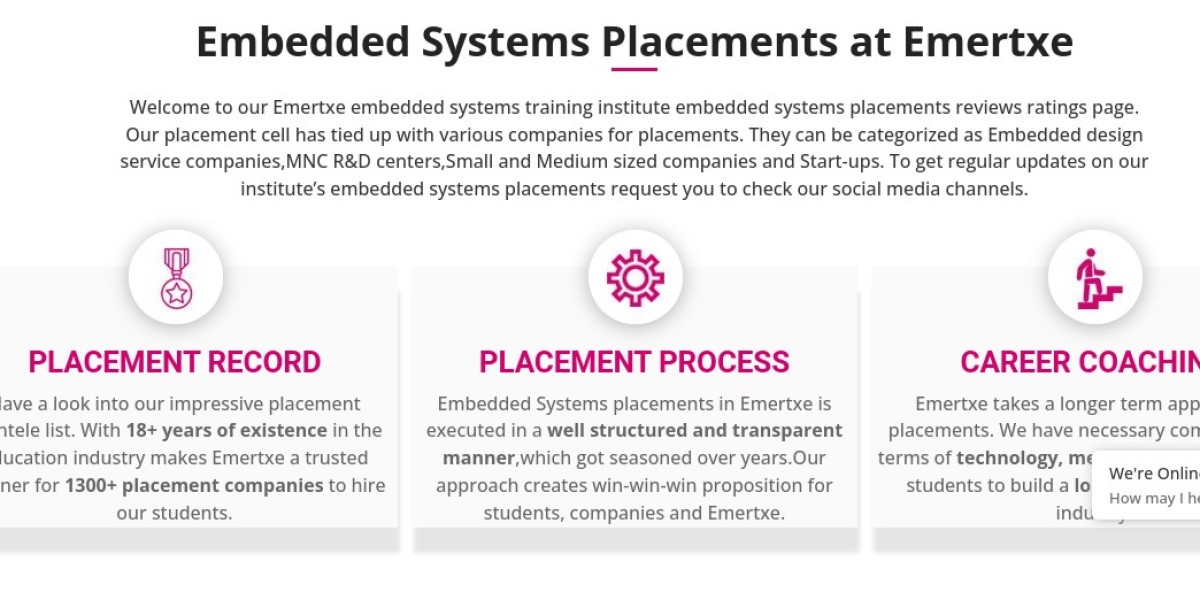Embarking on an embedded course is an exciting endeavor that opens doors to a world of innovation and opportunity. However, navigating the challenges of embedded systems design within the course curriculum can be both rewarding and daunting. From hardware constraints to software complexity, students face a myriad of challenges as they delve into the intricacies of embedded systems engineering. In this blog post, we'll explore some of the key challenges students may encounter in their embedded course curriculum and offer strategies for overcoming them.
Understanding the Complexity of Embedded Systems
Embedded systems are inherently complex, combining hardware, software, and firmware components to perform specific tasks within constrained environments. Understanding the interplay between these components and navigating the trade-offs involved in system design is a fundamental challenge in embedded systems engineering. An embedded course that provides a comprehensive overview of system architecture, hardware/software co-design, and optimization techniques equips students with the knowledge and skills needed to tackle these challenges effectively.
Dealing with Resource Constraints
Resource constraints, such as limited processing power, memory, and energy, pose significant challenges in embedded systems design. Balancing performance, power consumption, and cost considerations requires careful optimization and trade-off analysis. In an embedded course, students learn techniques for managing resources efficiently, including code optimization, power management strategies, and hardware/software partitioning. Hands-on projects that simulate real-world resource-constrained environments provide invaluable experience in navigating these challenges.
Debugging and Testing Embedded Systems
Debugging and testing embedded systems can be challenging due to the lack of visibility into system behavior and the difficulty of reproducing real-world conditions in a controlled environment. Students must develop proficiency in using debugging tools, simulators, and emulators to identify and diagnose issues effectively. Additionally, implementing robust testing methodologies, including unit testing, integration testing, and system-level validation, is essential for ensuring the reliability and correctness of embedded systems designs. An embedded course that incorporates practical exercises and projects focused on debugging and testing provides students with hands-on experience in addressing these challenges.
Keeping Pace with Rapid Technological Advancements
The field of embedded systems is characterized by rapid technological advancements, with new hardware platforms, software frameworks, and development tools emerging regularly. Staying abreast of these developments and adapting to evolving technologies is a perpetual challenge for embedded systems engineers. An embedded course that emphasizes continuous learning, exploration of emerging technologies, and engagement with industry trends prepares students to navigate the ever-changing landscape of embedded systems design. Encouraging participation in hackathons, competitions, and industry events can further enhance students' exposure to cutting-edge technologies and industry best practices.
Collaborating in Multidisciplinary Teams
Embedded systems design often requires collaboration across multidisciplinary teams, including hardware engineers, software developers, and domain experts. Effective communication, teamwork, and project management skills are essential for success in such collaborative environments. An embedded course that incorporates team-based projects, group discussions, and peer reviews cultivates these interpersonal skills and prepares students to thrive in professional settings. Encouraging interdisciplinary collaboration and fostering a culture of mutual respect and appreciation for diverse perspectives enriches the learning experience and equips students with valuable skills for their future careers in embedded systems engineering.
Conclusion
Navigating the challenges of embedded systems design in an embedded course curriculum is a transformative journey that prepares students for success in the dynamic and ever-evolving field of embedded systems engineering. By understanding the complexity of embedded systems, mastering resource optimization techniques, honing debugging and testing skills, staying abreast of technological advancements, and cultivating collaborative teamwork abilities, students can overcome challenges and excel in their embedded course studies. So, embrace the challenges, seize the opportunities, and let your embedded course be the gateway to a rewarding career in embedded systems design.








